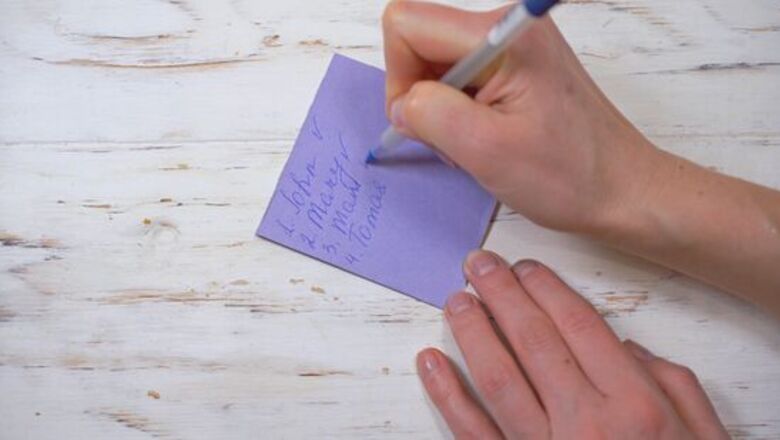
views
Choosing the Appetizers
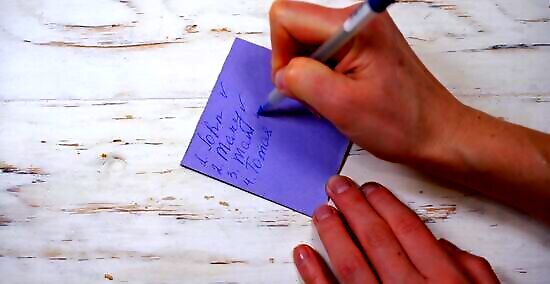
Vary the number of selections based on the number of guests. For a small dinner party, you should choose at least three different appetizers to serve. This amount will grow as your guest list grows. Stick with three appetizers when inviting 10 guests or less. If you're inviting 10 to 20 guests, offer five different choices. When your guest list ranges between 20 and 40 guests, offer seven selections. If your guest list exceeds 40 guests, provide nine different choices. You do not need to provide more than nine different appetizers, no matter how large your guest list grows.
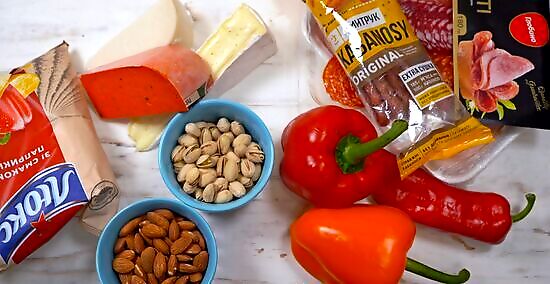
Pick from multiple appetizer families. Appetizers can be grouped into various families. By choosing selections from more than one family, you'll provide enough variety to wake up your guests' tastebuds and prepare them for the main course. Choosing selections from only one family, on the other hand, can cause guests to become too bored or ambivalent toward a certain taste by the time the appetizers are finished. In general, appetizers can be classified under five families: garden, starch, protein, snacks, and dips/spreads. Garden appetizers include vegetables, fruits, potatoes, and olives. Starch appetizers include finger sandwiches, dumplings, pizza, phyllo pastry, bruschetta, breadsticks, crackers, and buns. Protein appetizers include meatballs, sliced meats, skewered meats, chicken wings, sushi, and egg dishes. Snack appetizers include nuts, chips, pretzels, cheese cubes, and popcorn. Dips and spread include guacamole, relishes, preserves, compound butters, and any other spread served with crackers, fruits, or vegetables.
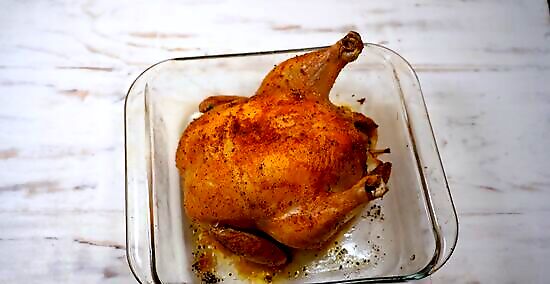
Complement the main course. Before selecting your appetizers, you should plan out your main course. Once you've determined that, you should choose appetizers that prepare the palette without overwhelming it. Complements are essentially opposites. If your main course will be filled with rich foods, make sure that most of your appetizers are fairly light and fresh. Conversely, if you're serving a lighter dish as your main course, opt for rich appetizer choices. Do not repeat flavors too often. You can work around a theme, but using the same exact flavors in each course of your meal can quickly dull your guests' palettes. For instance, if your main dish is heavy on cheese, you should avoid appetizer platters that include cheese.
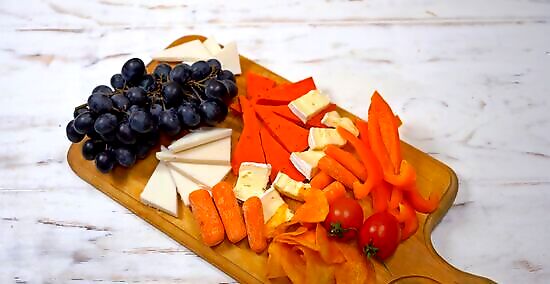
Consider the aesthetics. Great appetizers will please both the eye and the stomach. Choose appetizers with contrasting colors and shapes to catch your guests' eyes. For instance, pale cheeses match well with bold, brightly colored fruits. Finger sandwiches with blunt edges pair nicely with rounded meatballs, eggs, or sushi rolls. Similarly, the temperature and texture of your selections should also vary. Include both hot and cold appetizers. Mix and match crunchy foods with soft or creamy selections.
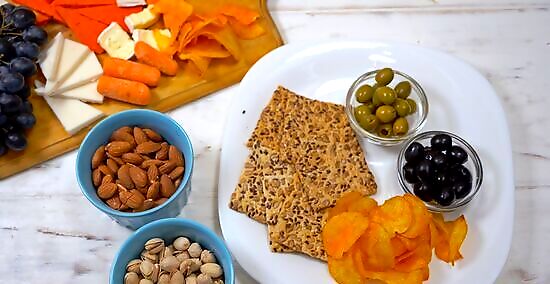
Include at least one convenience item. Convenience items are simple appetizers that require no preparation beyond plating them. These choices are both cost-effective and easy to serve. Your appetizers should include more than just convenience items if you want to really impress your guests, but the occasional convenience item is a welcome option. As a standard guide, consider making one-in-three appetizer choices a simple option. Simple options include cold vegetables, crackers, cheese cubes, nuts, and chips. These foods can help fill up your guests without breaking your piggy bank. Moreover, unused portions are usually easy to save for later.
Preparing the Appetizers
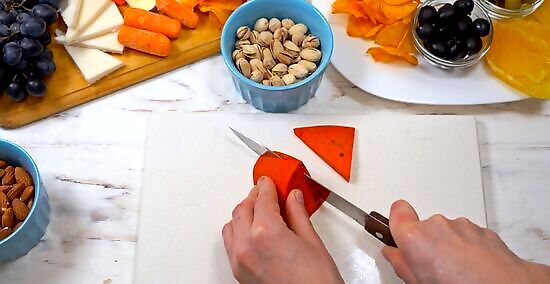
Prepare enough for your guests. No matter how many guests you have and how many appetizer choices you prepare, you should plan out the total amount around the maximum number of guests you anticipate having. The standard rule is to serve four to six pieces for each person. Note, however, that if you are planning an evening event that does not provide a main course and only has an appetizer, you should prepare 10 to 15 pieces per person. The amount of time can also change this figure. For instance, if you plan on letting the appetizer course last for two hours or more, plan on guests eating around 10 pieces for every two hours. Divide the total number of pieces by the number of choices to determine how much to prepare of each appetizer. For instance, if you have 30 guests, you will need about 150 pieces per guest and roughly seven different selections. That means you'll need to prepare approximately two dozen (or more precisely, 21 to 22) pieces of each appetizer.
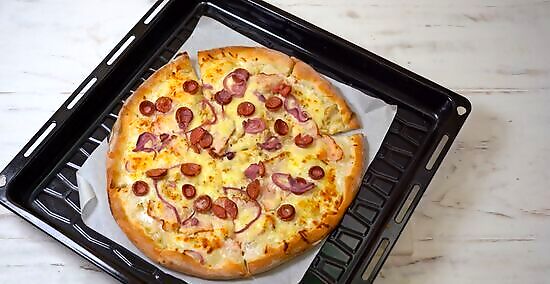
Cook in advance. For any appetizers that need to be cooked or assembled, do as much of the actual preparation as early as possible. A day in advance is ideal. Appetizers that need to be served warm should be prepared early and rewarmed as guests start arriving. Do your cooking in an oven to make sure that the appetizers are crisp. Avoid cooking anything in the microwave, even when there are instructions on how to do so. The only appetizers you should avoid baking too far in advance are those that will become soggy after being refrigerated, like soufflés or meats coated in a crispy batter. Do as much preparation as you can earlier in the day, then bake the appetizer, planning just enough time for the baking to finish immediately before your first guest should arrive. Continue keeping these appetizers warm in the oven as the rest of your guests roll in.
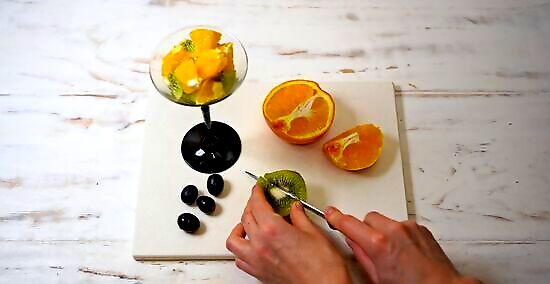
Create appealing displays. The appetizer selection should be visually appealing, but the way you arrange the appetizers also needs to catch the eye. Consider arranging the foods in a unique way or decorating the serving platter the foods will sit on. Use toothpicks and small plastic skewers to hold small complementary pieces of food together. You can even use thin pretzel sticks to accomplish the same purpose as long as you pair them with options that match well, like cheese and sliced meat. For appetizers that need to be contained inside small dishes, like pasta salads and fruit salads, choose a non-conventional dish to serve them in. Options include martini glasses, hollowed out orange peel shells, tea cups, and sterilized candle holders. Remember to decorate the platters, as well. Non-edible decorations can include doilies and decorative placemats. Edible decorations include green leaf lettuce, parsley, and edible flowers.
Serving the Appetizers
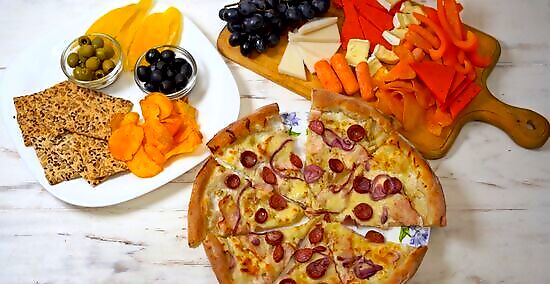
Know when to serve the appetizers. Cold appetizers should be set out before the party actually starts. Hot appetizers should be brought out once most, if not all, of the guests have arrived. Serve the hot appetizers yourself, even if you have others to help you. Doing so will give you a chance to interact with your guests. Crispy appetizers and those with melted cheese should be served fresh from the oven. Other warm options, like cooked vegetable dishes, can usually be served at room temperature without affecting the quality.
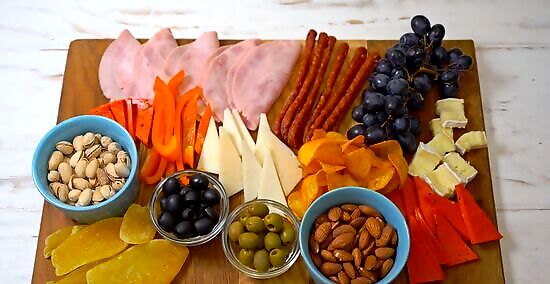
Serve some of the appetizers on trays. Cold appetizers that sit out the entire time can be placed on a table somewhere, but for hot appetizers served fresh, serve them on a large tray or platter. Serving foods on a tray makes it easier for you to take the appetizers around to each guest at your party, giving you the chance to mingle while fulfilling your duties as a hostess. Trays also make it easier to refill appetizers in the kitchen once your guests go through a batch of them. If you do not have a serving tray, you could improvise by using something like a decorating baking sheet or cutting board.
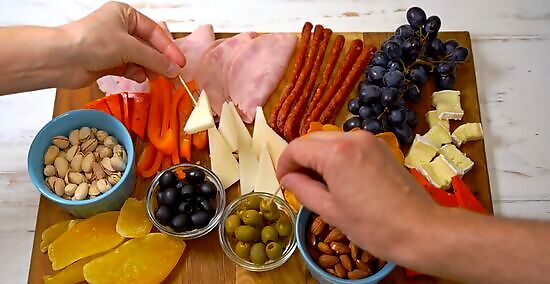
Clear room around the simple appetizers. Some appetizers, especially the cold ones, can be kept out on display for people to pick at. Among these selections, your guests are more likely to crowd around the simple choices, so you should keep a little extra space around them to prevent the area from getting too crowded. Simple choices that do not require any assembly by the guests and are easy to grab are often more popular. In contrast, people eat less when they have to put an appetizer together themselves, for instance, build-your-own finger sandwiches.
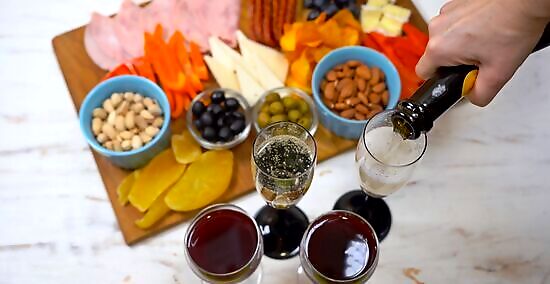
Set drinks out as well. Your guests will need something to drink as they munch on appetizers. Set up a separate beverage table where they can get what they need. Bowls of punch are a common option, but they may not be the most practical. Guests who are already juggling plates of appetizers may struggle to pour themselves a drink. A better option would be to set out pre-measured beverages. Depending on the nature of your party, light cocktails could be appropriate, or you might still prefer a non-alcoholic punch. If you're concerned about making sure that your guests have enough to drink, set out enough prepared drinks for every guest to grab at least one. Place a punch bowl or pitcher behind the prepared drinks for anyone who wants a refill.

















Comments
0 comment